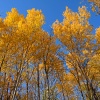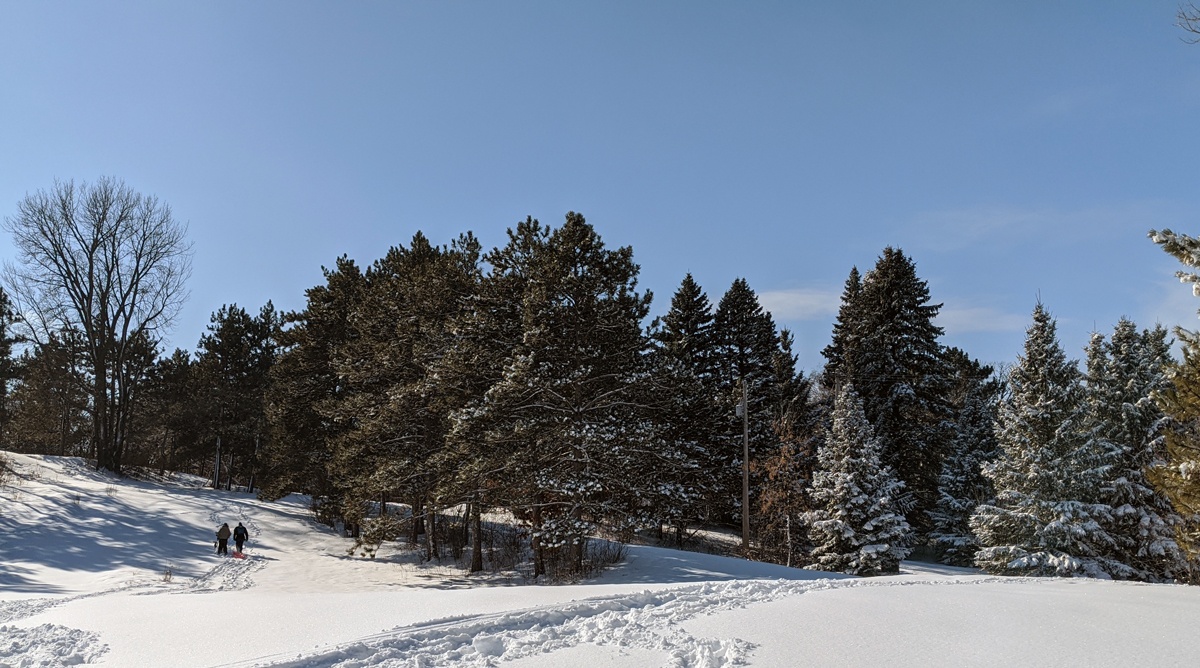Each season in Minnesota offers a different lens to our beautiful state. Winter is a special time of year filled with snowy pine trees, nights on the rink, and warm bonfires shared with friends and family. But climate change is beginning to threaten the way we recreate outdoors. Beloved activities like cross country skiing and ice fishing are becoming increasingly harder to do. Extreme weather in the form of unpredictable winter storms and warm spells plague our winters resulting in weather swings that threaten the harmony of our four seasons.
Thin Ice
In the land of 10,000 lakes, we value time spent fishing. But over the years, our warming climate has threatened the ice fishing season. Ice coverage has declined an average of 10 to 14 days in the last 50 years, according to data collected by the Minnesota Department of Natural Resources (DNR) and Minnesota Pollution Control Agency (MPCA), resulting in two fewer weeks on the ice for fishing and other lake-based activities.
Park and recreation managers across the state have seen firsthand how these changes are affecting their lakes. Three Rivers Assistant superintendent Luke Skinner’s personal experience echoes the DNR’s findings, “climate change is impacting ice fishing within the Park District. Ice anglers, who access Medicine Lake through French Regional Park now have an average of 10 fewer days of ice.”
Not only is time on the lake cut short, but as an avid angler himself, Skinner points out, “the impact is felt early and late in the ice fishing season when fishing is often at its best.” Fishing supports 27,000 jobs and makes up 4.2 billion dollars in the local economy. Seasonal impacts like this mean lost revenue for small business all over the state.
Ice fishing is an important part of our culture in Minnesota and a tradition for many families. Time on our lakes provides folks an opportunity to get outdoors during our harsh winter months.
Unpredictable Snowfall
As our climate continues to fluctuate, impacts are seen in snow coverage. Local meteorologist Sven Sundgaard explains the effects of climate change on snow coverage in an article from Bring Me The News: "We’re warming much faster in winter than summer—in fact by double the rate." Shrinking snow coverage is an inevitable part of a warming climate, but "a warmer atmosphere also holds more moisture, so storms can be more powerful with higher snowfall amounts," Sundgaard says.
In a new study from the University of Minnesota, researchers warn that Minnesota’s winters will warm by around 11 degrees, and we could lose up to 55 snow days in our season by 2100.
Impact to Snowshoeing
These changes to our climate mean more unpredictable weather patterns that impact predictable snowpack and snow conditions for winter recreation activities like skiing and snowshoeing. Brianna Rodgers, who teaches snowshoeing at Lake Wood Nature Center, says they need just 4 inches of snow to groom the trails, but, as of mid-February this year, the snow conditions weren’t good enough to groom their ski trails.
“I remember at the beginning of my naturalist career ten years ago we had ideal snow depth for teaching kids how to snowshoe. Now, I am lucky if I take students out snowshoeing once or twice a year.”
Lack of snow coverage also makes for icy conditions. “It is very difficult to teach 5th graders how to ski if they are more focused on just staying upright,” Rodgers says. Without fluffy snow, the experience can be risky and downright unenjoyable, which Rodgers fears will impact students’ willingness to try winter recreational sports in the future.
“The best way for Minnesotans to enjoy winter is by staying active and getting outside to play in the snow through a variety of winter recreational sports. Our snow is sacred to us in more ways than we know.”
The Winter Recreation Industry
Minnesotans and visitors spend millions of dollars in the winter recreation industry each year. A shorter season directly impacts local businesses and industries throughout the state. “The ski industry is the canary in the coal mine. Our business is inherently difficult due to our reliance on snow and cold weather,” remarks Sara Larson, Owner and President of Wild Mountain Ski Resort.
Even for a business with the ability to make its own snow, the added resources and differences with man-made snow are worrisome in the industry.
“Yes, we can make snow… but customers also need inspiration with snow in their yards. Without cold and snow in front of people, less people are inclined to ski. Warmer winters, rain events, long falls and early springs are impacting ski areas everywhere.” says Larson.
The Future of Winter Recreation
The recreation activities that keep Minnesotans moving and businesses thriving during our winter months are starting to be impacted by climate change. As a state often defined by our four distinct seasons, climate change could threaten much of our identity. Every step we take today to limit climate pollution is a step towards protecting our winter recreation traditions.

